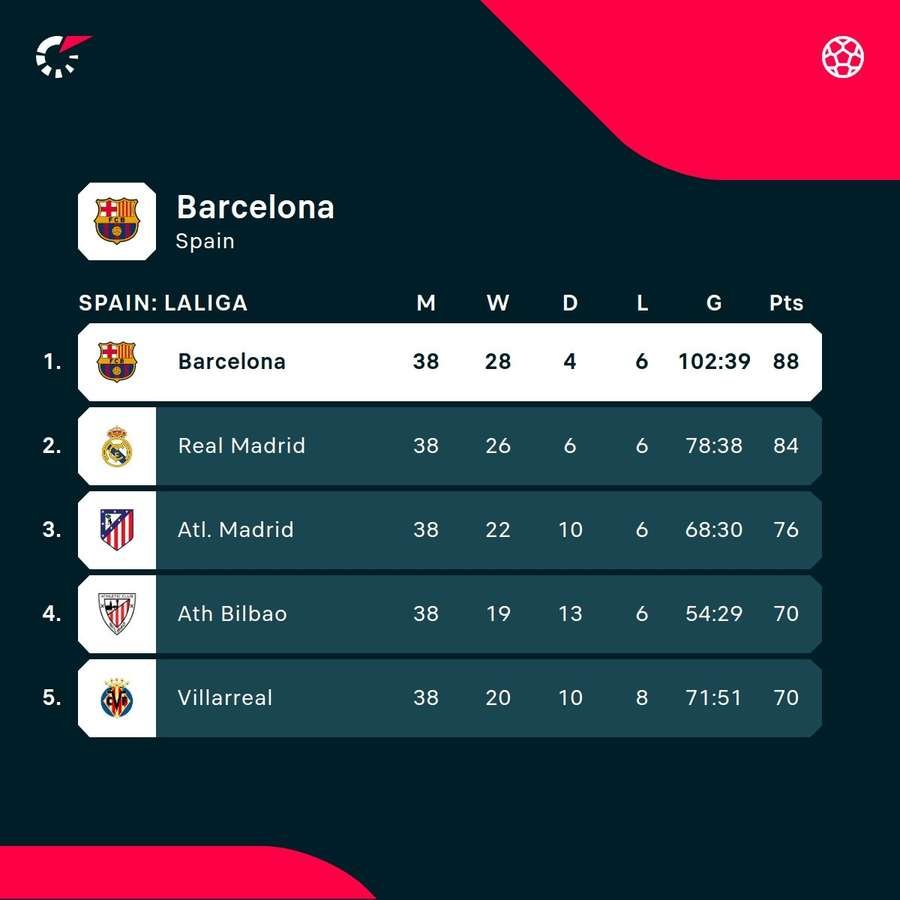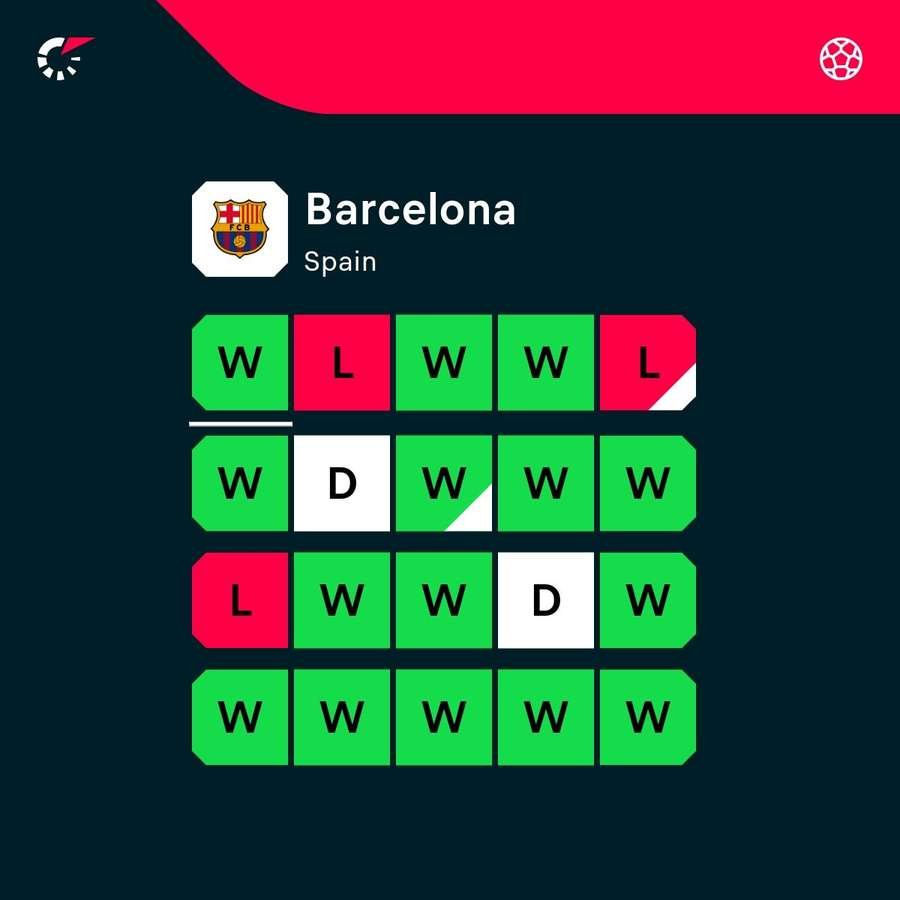Julio Tous is widely regarded as a leading figure in sports conditioning. Currently the head of physical preparation at Barcelona under Hansi Flick, Tous boasts a decade-long partnership with Antonio Conte, having worked together at Juventus, Chelsea, Inter, and the Italian national side. In the first segment of an exclusive interview with Sergio Levinsky, he reflects on the latest developments in football for Flashscore.
Tous states: “Barcelona has its own methodology; you might even refer to it as the Barça method. This is worth discussing since Barcelona, as a city, has long been known for its innovative spirit. Naturally, at the heart of this is Barça, which stands out as a paradigm of professional footballing excellence, almost unparalleled internationally, given the multitude of sports disciplines it engages in.”
“There are two intersecting trajectories: the pre-existing methods in Barcelona and a coaching staff, led by Flick, who brings fresh ideas from Germany, which together form an impressive synergy.”
“For me, that’s really what stands out this season. When I began communicating with Flick among our working group, everything clicked; he said to me, ‘Go ahead, do what you need, there’s no problem at all.’ This, from the perspective of those of us training the players, is probably among the most impactful factors. It’s the fusion of a German coaching ethos with the Barcelona model, if you will.”
Paco Seirul-lo’s book on Barça DNA mentions that ‘the student has surpassed the master.’ How did that phrase resonate with you?
“Honestly, I couldn’t sleep that night. It filled me with immense pressure and sparked what people call ‘imposter syndrome.’ I’ve known Paco for over 30 years, since I arrived here in 1995. I believe there’s a deep mutual respect, and perhaps through that statement he aimed to express, ‘Hey, I’m leaving this legacy in capable hands. It’s not just my effort, but also that of other colleagues who’ve flourished, adapting and achieving significant results across different disciplines within this same Barcelona framework.'”
Isn’t that perhaps the essence of the methodology? Adapting the physical training to align with Barcelona’s traditional style of football?
“Paco Seirul-lo’s methodology serves as the cornerstone; it’s specifically crafted for team sports. Football, in particular, is likely where this approach can be most effectively implemented. It all began with handball, where Barça was dominant, clinching numerous European titles, before transitioning to football. However, football has a longer history, which lends itself to unique challenges.”
“This methodology is fundamentally distinguished from other training approaches worldwide, such as those emanating from powerful German schools, because it’s exclusively tailored for team sports. The problem arises when elements from athletics or swimming are adapted for football, which exists in a state of constant flux.”
“Football is indeed the most unpredictable of sports. Other disciplines tend to follow predictable patterns and focused outcomes, while football hinges on situational dynamics. Its complexity is evident in how it continually evolves; this is why generic methods may not work effectively. Even a high-performing athlete can still deliver results despite sub-par training methodologies.”
“However, the beauty of this method lies in its design specifically for team sports, not just a reworked version of an individual sport approach. The shift made by Paco was critical; he recognised that we needed to reinvigorate training theory for collective sports.”
“Paco coordinated a publication prior to ADN Barça that detailed team sport training, where all this is elaborated. It’s been about four or five years since its release, outlining this structured and cognitive training model, directly applicable to team sports, which is essentially the Barça methodology.”

You are quoted as saying, ‘It’s not luck, it’s science’…
“One of the earliest scientists in the realm of football, Tom Riley from Liverpool, once said that while ‘football itself isn’t a science, scientific principles can aid in its development and improvement.’ You have to highlight that science is inherently based on reproducibility. An idea taken in Argentina, for instance, can yield the same results if the right parameters are replicated.
“However, in football, this commonality does not occur as frequently. This field can certainly benefit from a scientific approach, as human performance is variable and influenced by numerous factors. Many evidence-based scientific insights have proven to be advantageous, especially for injury prevention. At present, big data is quite a hot topic, although it’s crucial to remember that data alone won’t effectively interpret the game.
“Take the bookmakers, for example. At the start of the season, odds were set at six-to-one against Barça. We should all have made a bet! Ultimately, Barça secured the league title against all odds, showing that the algorithms used were, while refined, not infallible.”
‘The scale of competitions in football is utterly outrageous’
Your focus on strength training is essential for injury prevention.
“Absolutely, and it’s also vital for enhancing performance. Current football scheduling is nothing short of excessive. This year, we have another tournament to consider—one we fortunately aren’t participating in for the sake of player health.”
“While winning the Club World Cup is a commendable goal, from a preventive standpoint, it poses challenges. A FIFA report highlighted Lautaro Martínez’s situation, detailing an unsustainable number of games within a limited timeframe, resulting in an untenable scenario.
“Injuries persisted, with players experiencing drops in their performance as the season progressed. This trend is easy to understand; overwork leads to fatigue. The most logical countermeasure is rotation.
However, clubs like Barça aim to win. That desire complicates rotation because everyone wants to feature the best players. In an ideal world with two rosters, younger players could gain valuable experience in less critical matches, but logistical limitations exist.
“Another preventive measure consists of supporting conditioning, which is traditionally understood as physical preparation combined with medical assistance. This dual approach is crucial for maintaining performance levels gained at the start of the season, especially following pre-season. As the year progresses, smaller, consistent training doses are necessary to preserve what was achieved earlier.”
_______________________________________________
Sponsored:
FIFA Club World Cup – Every Game Free, exclusively on DAZN.
Sign up here to start streaming.
_______________________________________________
You were not part of Flick’s original team but were already at the club, correct?
“That’s right. Flick accepted the structure already in place at Barça, both in terms of physical training and physiotherapy, supported by a team of highly skilled professionals proficient in innovative techniques developed by Raúl Martínez to aid tissue recovery post-exertion.”
How do you view the upcoming season? Barcelona’s primary competitors in La Liga are Real Madrid and Atletico Madrid, both participating in the Club World Cup. Could this advantage Barcelona?
“Yes, there’s no denying that the accumulated match load for these two clubs this season will be substantially greater. Additionally, it’s vital to consider national team fixtures, which adds to their burden. Regenerating from such a heavy competitive load in a short timeframe will be incredibly challenging.
“La Liga is set to commence in mid-August, so the timeline for recovery becomes crucial.
‘Madrid and Atleti must maximise their holiday weeks’
How much time will they need to recuperate?
“They’ll have to be extremely meticulous during their limited downtime. It’s essential that players mentally reset and physically recover. However, achieving this is no small feat. Typically, players are advised to step away from football for at least a week to refresh and enjoy time with family. However, the reality is they may not have the luxury of indulging in that kind of break due to the pre-season schedule looming.
“The pressing timeline raises serious questions. Institutions need to be conscious of the pressures they’re imposing on players; from my vantage point, they’re pushing the limits quite considerably.
‘Ter Stegen: Pushed to his limit’
Regarding individual athletes, what are your thoughts on Marc-Andre ter Stegen’s situation? It’s unusual for a goalkeeper to have lengthy absences, yet it seems there’s little patience with this.
“This duality remains constant. When a first-choice player is sidelined, there’s always an eagerness for their swift return. Naturally, that applies to the player as well. Every effort is made to expedite their recovery.
“The circumstances this season featured a goalkeeping dilemma, with one player establishing their place while the primary goalkeeper sought to make a comeback. Consequently, the timing conflict and subsequent decisions made by the coach led to a tight situation.
“Ultimately, the coach’s prerogative is final. While input from the support staff plays a crucial role in informing recovery protocols, a goalkeeper’s situation is inherently more delicate than outfield players. In Ter Stegen’s case, his prior unbeaten stint as the starting keeper made for complicated decision-making.
“Thus, the scenario was precarious; coupled with the pressure from a first-choice goalkeeper wanting to return, it culminated in a scenario all too evident.

‘Lewandowski demonstrates unparalleled professionalism’
Now, I would like to discuss Robert Lewandowski, who has had an outstanding season. How can a player at his age score an incredible 40 goals? What’s the secret behind this achievement?
“Ultimately, it’s all about the player. Lewandowski has been meticulous in maintaining his fitness, bolstered by an extraordinary work ethic and a commitment to his craft. I won’t draw direct comparisons, but it’s common for strikers to exhibit more erratic behaviours; Lewandowski is the exception.
“During my time in Italy, we often joked that defenders could take charge of training sessions due to their robust work ethic and discipline. It’s rare for a striker, particularly one with his goal-scoring talent, to emulate such dedication over the years, yet Lewandowski exemplifies exactly that.
“As an expert, I’d assert that if there’s a secret ingredient for over 30s in football, it’s high-intensity neuromuscular training. Metabolic conditioning should rank second to this, as fostering neuromuscular capabilities is paramount. Proper preparation ensures that one can continue competing well into their later career, mitigating performance dips, injuries, and those frustrating swings in output. Lewandowski has maintained extraordinary discipline, making the right training regimens incredibly beneficial for his longevity.”
‘Lamine Yamal’s maturity at a young age is astounding’
Next, I want to address Lamine Yamal. How do you approach training with such an exceptional talent, playing at the high-performance level with seniors?
“Lamine’s innate quality is evident to anyone. I was genuinely taken aback the first time I saw him train; he moved like a unique blend of grace and agility. It was remarkable—his raw talent was clear, even at his first training session! A player possesses his level of quality not by chance.
“What astounds me about him is the maturity and stability in his manner at such a young age. When I reflect on my teenage years, stability was certainly not my strong point. Precarious hormone imbalances made for emotional ups and downs.
“The incredible groundwork laid by Barça and La Masia is paying off, producing a polite, respectful individual who maintains decorum in the dressing room. Like the rest of La Masia alumni, he embodies a beautiful sporting ethos. This foundational strength makes our role straightforward—tailoring training to his unique needs is relatively seamless.”
‘Fermin’s injuries are likely a consequence of overexertion’
Similar to Rodri, Fermin Lopez had a demanding season leading to injuries, would you agree?
“Yes, indeed. Fermin’s troubles stemmed from his lack of rest; this was particularly evident as he had to play significant minutes over the summer, including at the Olympics and in Spain’s triumphant European Championship campaign. The strain was tremendous, and by the time the season commenced, he was already facing consequences.
“After an ineffective two-week recovery period, resulting from insufficient downtime, Fermin encountered a rare injury that affected both legs. Luckily, it had no severe repercussions, and we are now progressing well with his rehabilitation.
Compiled by SportArena.com.au.
Fanpage: SportArena.com.au.
LiveScore – Live Sports Results & Odds.




